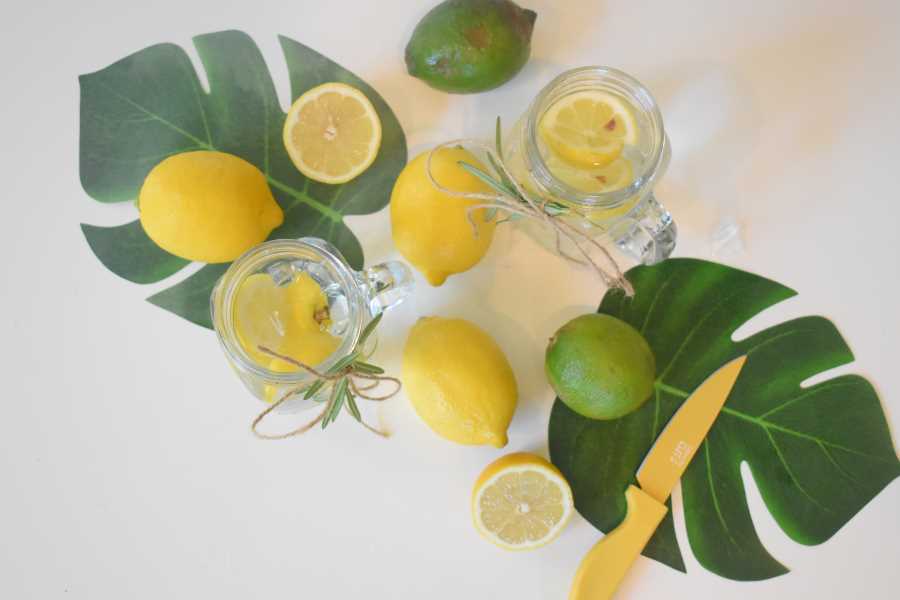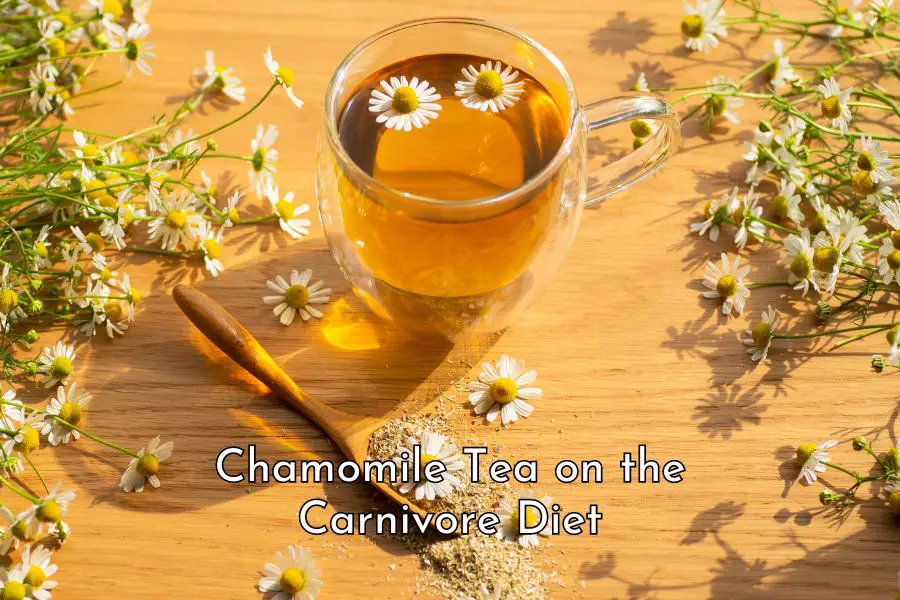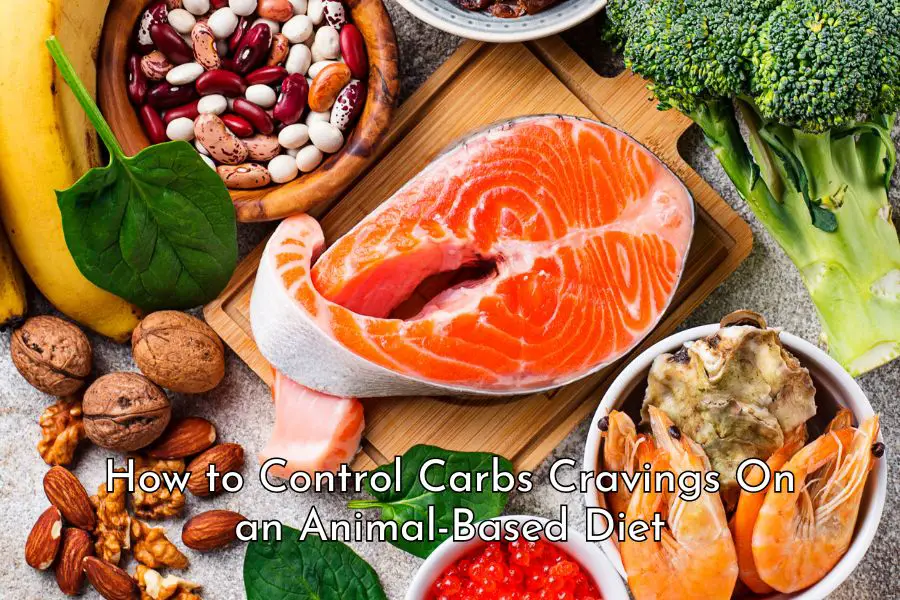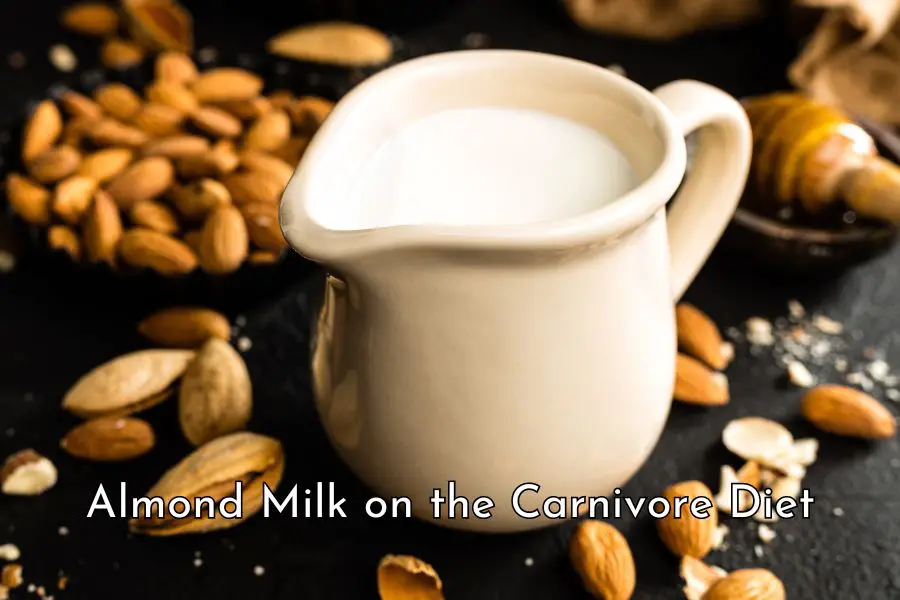Your fear of getting scurvy on the carnivore diet is totally reasonable. Vitamin C deficiency can cause scurvy and animal-based foods are generally not known as a source of vitamin C. The best sources of vitamin C are fruits and vegetables. So can you get scurvy on the carnivore diet?
You are unlikely to get scurvy on the carnivore diet. This is because due to the negligible amount of glucose intake on this diet, your vitamin C requirement will be low. Furthermore, animal-based foods, especially organ meats, have some vitamin C at a level that can be sufficient to meet the 10mg a day to prevent scurvy. Historical evidence also shows that meat-eaters don’t get scurvy.
What is scurvy?
Scurvy is a well-known medical condition associated with vitamin C deficiency.
Symptoms of scurvy include poor wound healing, gum swelling, loss of teeth, bleeding under the skin, corkscrew and swan-neck hairs, perifollicular hemorrhages on lower extremities, spoon nail and splinter hemorrhages, joint pain and bone pain. [1]
If left untreated, scurvy can lead to life-threatening conditions such as edema, destruction of red blood cells, jaundice, and convulsions. [2]
As you can see, vitamin C deficiency is a very serious medical condition. This is because of the vital role vitamin C plays in the synthesis of collagen, the most abundant protein in the human body that can be found in blood vessels, skin, connective tissues, bones, and muscles. Vitamin C is also needed in the synthesis of dopamine, norepinephrine, epinephrine, and carnitine. It is widely known as a powerful antioxidant, plays an important role in immune function, and improves the absorption of nonheme iron. [3, 4, 5, 6]
Although vital, your body is unable to synthesize vitamin C and must get it from dietary sources. Vitamin C can be found in abundance in fresh fruits and vegetables. Animal-based foods are not known as a vitamin C source, however, they do contain some. Further detail on this is discussed below. [7, 8, 9]
How much vitamin C do you need to prevent scurvy?
The Office of Dietary Supplements at the National Institutes of Health currently recommends daily allowances (RDAs) for vitamin C as follows. [10] These recommendations are developed by the Food and Nutrition Board at the Institute of Medicine of the National Academies in 2000. [11]
| Age | Male | Female | Pregnancy | Lactation |
|---|---|---|---|---|
| 14–18 years | 75 mg | 65 mg | 80 mg | 115 mg |
| 19+ years | 90 mg | 75 mg | 85 mg | 120 mg |
| Smokers | +35 mg/day | +35 mg/day | +35 mg/day | +35 mg/day |
The Food and Nutrition Board states that to provide antioxidant protection, the RDAs for adults are set “based on the vitamin C intake to maintain near-maximal neutrophil concentration with minimal urinary excretion of ascorbate”. [12]
Clearly, this is not the level set to prevent scurvy. According to the Office of Dietary Supplements, depending on the level of vitamin C the body stores, signs of scurvy can appear within one month of a vitamin C intake below 10 mg/day. That means as little as 10 mg of vitamin C a day is sufficient to prevent scurvy. [13]
How much vitamin C is there in animal-based foods?
Information on the vitamin C content in animal-based foods is very scant. Below is a summary of what I’ve managed to find. In short, animal-based foods, especially organs, do contain some vitamin C, albeit at a level that is much lower than what is usually found in fruits and vegetables.
USDA Nutrient Data Set
In various USDA Nutrient Data Sets for retail beef, veal, lamb and pork cuts which provide retailers nutrient data for the purpose of on-pack nutrition labeling, every kind of cuts, raw or cooked, lean or fat, are all listed as having zero vitamin C content. [14, 15, 16, 17]
However, in the documentation for pork cuts, it is clearly stated that while other nutrient values were measured, “Values for carbohydrate, fiber, sugars, and vitamin C were assumed to be zero.” This appears to be the method used across meat products. [18]
The USDA does provide vitamin C contents of some seafood, however. Below are some examples: [19]
| Vitamin C | Clam | Mussel | Oyster | Fish roe |
| mg/100g | 22.1 | 8.0 | 8.0 | 16.0 |
The Greenland Inuits were found to obtain 21 mg of vitamin C a day just from consuming meat and organs from seals. [20]
This is more than the vitamin C threshold of 10 mg/day needed to avoid scurvy as mentioned above.
Nutrition Data
The following information on vitamin C in raw beef organs is collated by Enviromedica from the Nutrition Data’s database which comes from the USDA’s National Nutrient Database for Standard Reference. [21, 22]
| Vitamin C | Liver | Heart | Kidney | Pancreas |
| mg/100g | 1.3 | 2.0 | 9.4 | 13.7 |
Descalzo et al (2007)
In a study published in the Meat Science Journal, Descalzo et al (2007) examine the difference in the antioxidant profile of fresh beef from pasture-raised and grain-fed. In contrast to the above USDA data, it is found that 100 grams of fresh pasture beef have approximately 2.53 mg of vitamin C compared to around 1.6 mg for grain-fed beef. [23]
Asia Pacific Journal of Clinical Nutrition
A series of vitamin C food charts are available on the website of the Asia Pacific Journal of Clinical Nutrition. The vitamin C contents of some animal foods are excerpted below. [24] However, there is no information on how or when this information is collected. Some critical information is also missing, for example, it is not reported which animal the heart, kidney or tongue samples came from.
| Food | Vitamin C (mg/100g) |
| Roe, cod, fried | 26mg/100g |
| Chicken liver, fried | 13mg/130g |
| Lamb brain, boiled | 17mg/150g |
| Heart, roast | 11mg/140g |
| Kidney, fried | 9mg/100g |
| Liver, fried | 12mg/130g |
| Tongue, stewed | 6mg/100g |
| Tripe, stewed | 3mg/100g |
| Fresh full cream milk | 2mg/230g |
| Fresh skimmed milk | 2mg/230g |
Lloyd and Sinclair (1953)
Vitamin C contents of various animal parts based on the work by Lloyd and Sinclair (1953) quoted in the book “Die Ascorbinsäure in der Pflanzenzelle. Vitamin C in the Animal Cell” are reproduced below. [25]
| Vitamin C (mg/100g) | Ox | Horse | Dog | Sheep | Rat |
| Brain | 16.6 | 18.5 | 13.4 | 15.4 | 27 |
| Hypophysis | 126 | 136 | 101 | 139.6 | 106 |
| Testicle | 30 | 46 | 45 | 34 | 26.3 |
| Thyroid | 17 | 18 | 16.5 | 31.7 | 22 |
| Stomach | 6.3 | 8 | 4 | 6.5 | 16.6 |
| Small intestine | 18 | 17 | 18 | 20.2 | 22.6 |
| Large intestine | 7.3 | 6.8 | 7 | 10.4 | 19 |
| Lymphatic ganglion | 51 | 44 | 27.6 | 45.4 | 57 |
| Lung | 18.2 | 18 | 14.6 | 12.6 | 27 |
| Skeletal muscle | 1.6 | 1.3 | 1.7 | 2.55 | 3.1 |
| Cardiac muscle | 3.8 | 3.3 | 3.6 | 6.2 | 4.6 |
| Smooth muscle | 6.3 | 5.3 | 4 | 10.8 | 18.7 |
| Liver | 20-37 | ||||
| Spleen | 27.5 | 29 | 24.4 | 34 | 32.6 |
| Adrenal | 97-140 |
Although this is an old study, interestingly, the vitamin C level in ox skeletal muscle found here is the same as that of grass-fed beef found in Descalzo et al (2007) study at 1.6mg/100g.
Bessey and King (1933)
In a study published in the Journal of Biological Chemistry in 1933, Bessey and King found the following with regard to vitamin C in animal tissues. [26]
| Rat (75 days) | Rat (1 year) | Rabbit (60 days) | Rabbit (1 year) | Chicken (3 months) | Hog (1 year) | |
| Brain | 36 | 37 | 31 | 22 | 33 | 18 |
| Liver | 27 | 17 | 20 | 13 | 28 | 19 |
| Adrenals | 231 | 135 | 153 | 146 | ||
| Heart | 12 | 7 | 10 | 5 | 8 | 4 |
| Muscle | 6 | 4 | 4 | 4 | ||
| Kidney | 17 | 14 | 12 | 7 | 15 | |
| Blood | <2 | <2 | ||||
| Testes | 31 | 26 | 29 | 24 | ||
| Ovaries | 40 | |||||
| Corpus luteum | 139 | |||||
| Spinal cord | 12 | |||||
| Follicular fluid | 19 |
Chris Kresser
In this article, Chris Kresser, an influential functional medicine practitioner, listed beef liver’s vitamin C level at 27 mg per 100g but doesn’t state the source of this information. This is substantially higher than the level of vitamin C in the liver from the USDA dataset but within the range of the Lloyd and Sinclair (1953) data.
Can you get scurvy on the carnivore diet?
Based on the data available, you are unlikely to get scurvy on the carnivore diet because (i) your demand for vitamin C is considerably lower due to a negligible carbohydrate intake, and (ii) fresh animal food should provide you with sufficient vitamin C to prevent it. Historical evidence also shows that meat-eaters don’t get scurvy.
Meat-eaters need less vitamin C
Researchers hypothesize that, due to their molecular similarity, glucose and vitamin C would compete for absorption and that glucose would hinder the entry of vitamin C into cells. As a result, the vitamin C requirement for someone on a diet low in glucose would be a lot lower than that for someone on a high carbohydrate diet. [27, 28]
The current RDAs of 75mg/day for women and 90mg/day for men are in the context of the recommendation that adults get a whopping 45%-65% of total calories from carbohydrate sources. [29]
If you are on the carnivore diet, there would be a negligible amount of glucose competing with vitamin C for absorption. Hence you don’t need a lot of vitamin C because whatever you consume would be utilized efficiently. [30]
Vitamin C in muscle meat is sufficient to prevent scurvy
As noted above, according to the Office of Dietary Supplements, just 10 mg of vitamin C a day is sufficient to prevent you from getting scurvy. Even if you don’t eat organ meat and rely solely on muscle meat for energy, the amount of vitamin C contained in muscle meat still exceeds the 10mg/day to ward off scurvy.
For example, if you eat grain-fed beef only and need about 2000 calories a day, you would have to eat about 3 pounds or 1.33 kg of beef a day. Using Descalzo et al (2007) data quoted above, there would be 21.3 mg of vitamin C (1.33 x 1.6) in that quantity of beef consumed, which is more than double the scurvy threshold.
Ample vitamin C on a nose-to-tail diet
As can be seen from the data above, organ meat has a lot more vitamin C than muscle meat. If you follow a nose-to-tail diet and eat as many parts of the animals as possible, you certainly won’t have any problem meeting the 10 mg requirement. Incorporating lightly cooked liver, heart or kidney regularly into your meals should get you covered.
Meat eaters don’t get scurvy
The Arctic Inuit
The Arctic Inuit who lived on the traditional diet of mostly meat (seals, fish, whales and mussels) all year round and rarely any fruits and vegetables did not suffer from scurvy. [31]
Vilhjalmur Steffanson
In 1906, Vilhjalmur Stefansson, an arctic explorer, was forced to live on the all-meat diet of the Inuit to survive when a ship carrying his supplies failed to arrive. He remained in perfect health after 9 years living entirely on this diet. Stefansson later wrote in the Harper’s Monthly Magazine in 1935 that “I did not get scurvy on the fish diet nor learn that any of my fish-eating friends ever had it“. [32, 33, 34]
Observing the health benefits of the Inuit diet himself, he became vocal and took issue with the medical dogma of the time that the best diet was one with a variety of foods and including a lot of raw vegetables. Understandably, he was not well-received. [35]
In 1928, under the supervision of a committee representing several universities and other organizations, Stefansson and a fellow explorer, Karsten Andersen, went through an experiment conducted by researchers at Bellevue Medical Center, New York City. The two men lived on animal food for a year and both remained in good health after the experiment. No scurvy was reported. [36, 37]
Zerocarb and keto communities
Scurvy is also not known as a condition associated with the zero carb or keto communities. Esmée La Fleur, who runs the zerocarbzen.com website, interviewed around 40 people on the carnivore diet and reported that none of those interviewed “have experienced any symptoms of vitamin C deficiency, even after 2-18 years of eating this way”. [38, 39]
Some well-known medical professionals who are advocates of the carnivore diet (Dr Shawn Baker, Dr Paul Saladino and Dr Ken Berry) have all provided assurance in the media that you are unlikely to get scurvy on the carnivore diet.
Rare cases of scurvy
The only information I could find on scurvy associated with the carnivore diet is this video by Elliot Overton, a nutritional therapist with a qualification in functional medicine. In the video, he went through a few cases of his clients who had health issues that were not improved by the carnivore diet but could be treated by vitamin C supplements.
Carnivore diet’s best practice to prevent scurvy
It’s highly unlikely that you will get scurvy on the carnivore diet because the level of vitamin C in animal food appears to be sufficient to meet your body’s needs. However, given the vital role vitamin C plays as discussed above, it is best to stay cautious.
In this post, I have written in detail the five healthy eating principles which closely emulate the way our ancestors did for millions of years. Three of them are especially important in relation to ensuring adequate vitamin C intake:
- Eat nose-to-tail. Organ meats are packed with essential nutrients and have a much higher vitamin C content than muscle meat. By eating nose-to-tail, you are more likely to get sufficient vitamin C and other essential nutrients for your body’s needs.
- Eat both cooked and raw. Vitamin C is heat sensitive and can be destroyed easily by cooking. It’d be great if you can eat raw and are able to get your food from safe sources. If you can’t handle raw or are unsure about where your food comes from, try to cook lightly such as searing instead of stewing.
- Eat from a wide variety of animal food sources. Ruminant, poultry and pork organs are all good sources of vitamin C, and so are seafood such as fish roe and shellfish. By broadening your food choices, it’s not only more fun but you are also more likely to get sufficient nutrients. [40]
If you are still concerned and if you don’t have issues with plant food, of course, you can have some plant food now and then, it’s not a big deal.
For example, one medium lemon will give you 30 mg of vitamin C. Half of a lemon with a teaspoon of raw honey in the morning will give you sufficient vitamin C to keep the ‘pirate’s disease’ at bay. Similarly, a few slices of orange should also do the job.
If you can’t eat raw or lightly cooked animal source foods, and also can’t handle plant food at all, a vitamin C supplement can be your last resource.
Conclusion
Based on the evidence presented above, the likelihood of developing scurvy on the carnivore diet is extremely small.
I’d like to end this post with a remark by Doctor Toth and Clemens, PhD from International Center for Medical Nutritional Intervention, Paleomedicina in Hungry, the only center in the world currently using a paleolithic ketogenic diet to treat its patients. In an article published in the Journal of Evolution and Health, they suggest that: [41]
an evolutionary adapted human diet based on meat, fat and offal would provide enough vitamin C to cover physiological needs and to ward off diseases associated with vitamin C deficiency.
If you find this post helpful, please consider sharing this post and my site with your family, friends, and followers. That would be much appreciated. Please also check out my library of articles on the carnivore diet here which is updated regularly.
Disclaimer: The information in this post is for reference purposes only and not intended to constitute or replace professional medical advice. Please consult a qualified medical professional before making any changes to your diet or lifestyle.
Photo credit: Mariah Hewines on Unsplash





